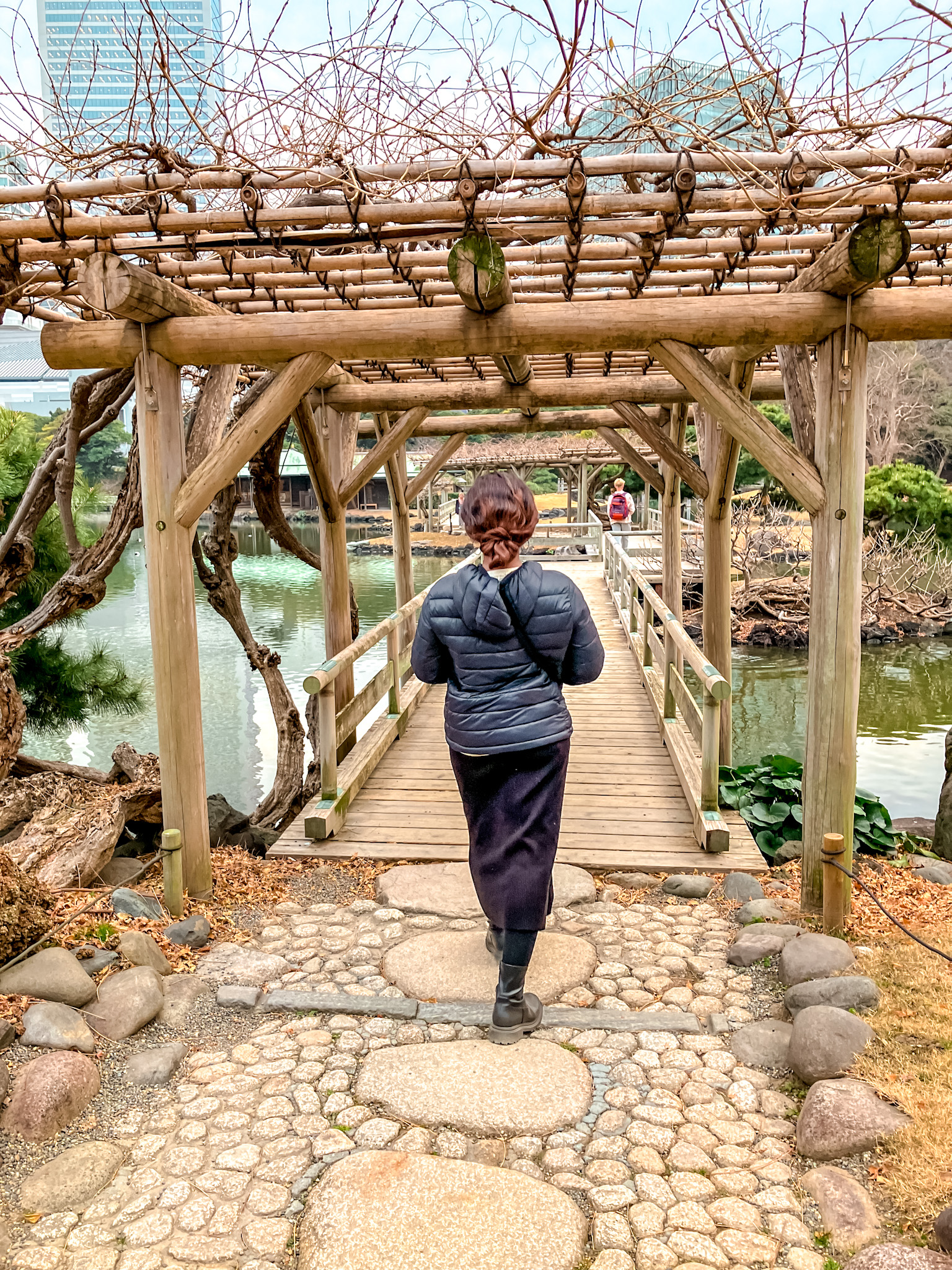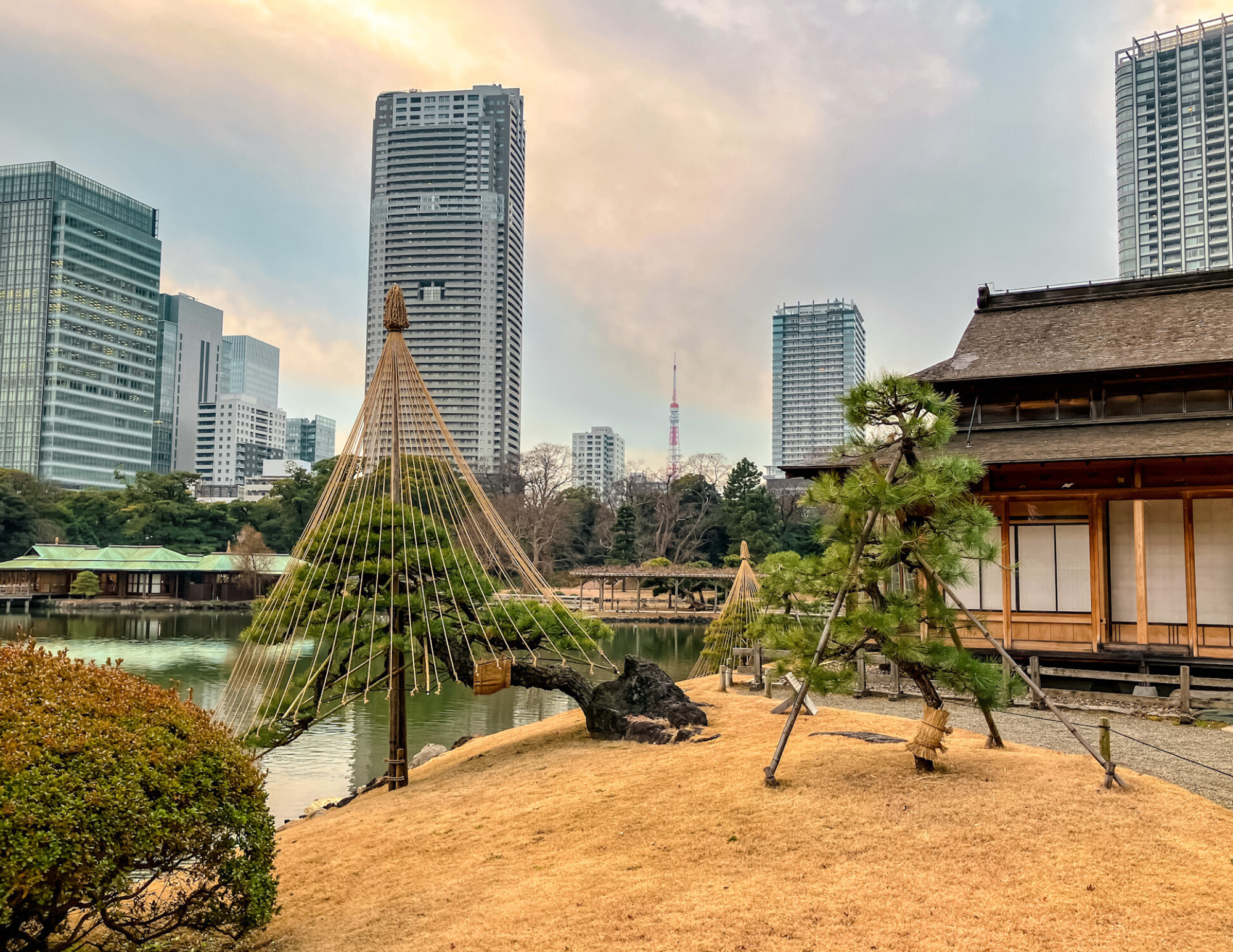Finding a peaceful pocket in the middle of Tokyo is my love language. Hama-rikyu Gardens is one of those places where the city hushes: glass towers behind you, rippling water in front, wind in the pines. We visited in January, and it was everything I wanted from a winter garden. Crisp air, long light, and quiet paths, with the bonus that the first plum buds were starting to think about opening. This is where I come to exhale.
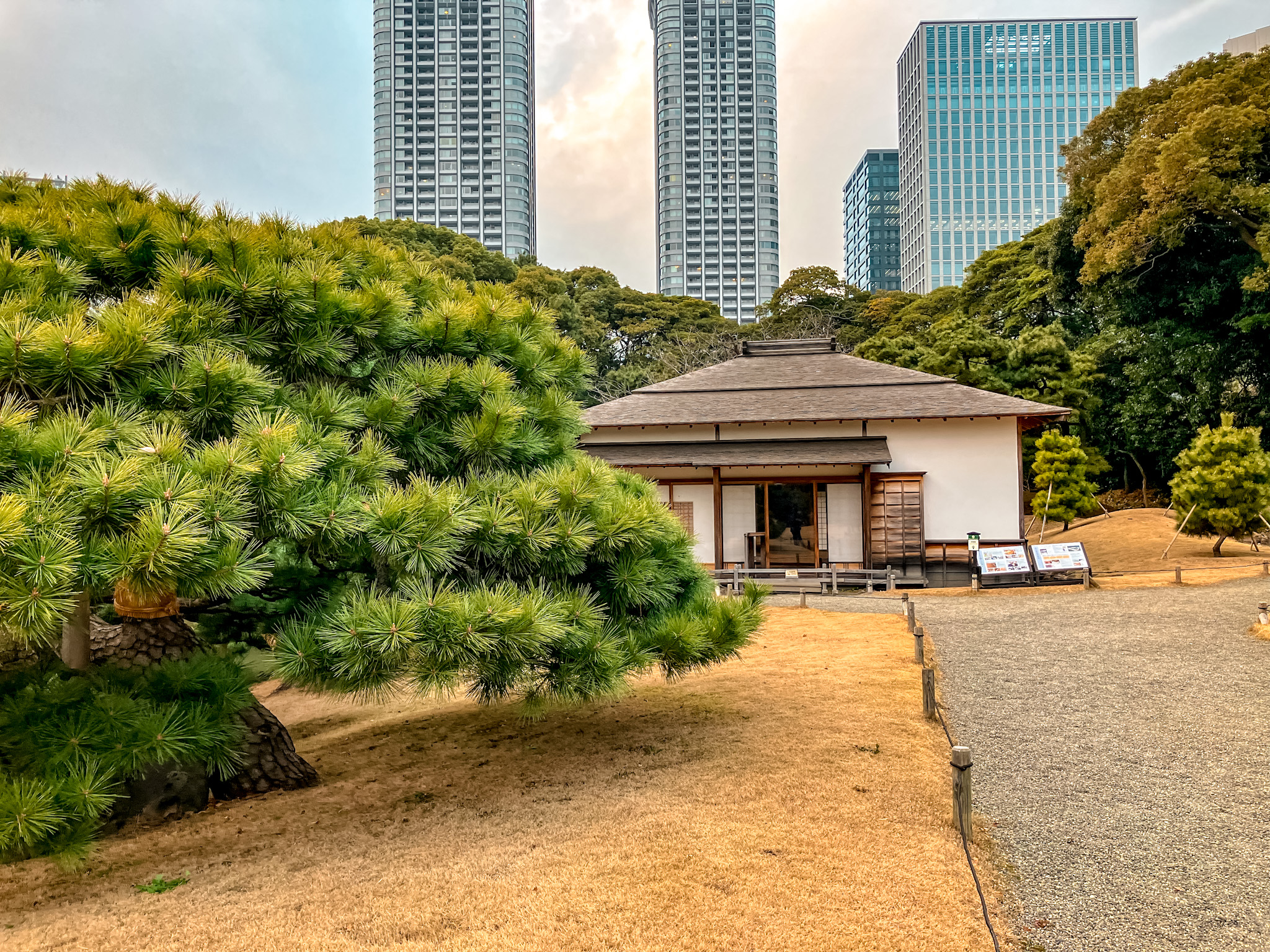
Why Hama-rikyu is special
This historic daimyō (feudal lord) garden dates back to the Edo period and once belonged to the Tokugawa shogunate. Its signature feature is Shioiri-no-Ike, a seawater tidal pond that rises and falls with Tokyo Bay via sluice gates—the only one of its kind left in Tokyo. The garden carries top cultural designations and perfectly frames that “old meets new” Tokyo: black pines, tea houses, and… Shiodome skyscrapers gleaming just beyond.
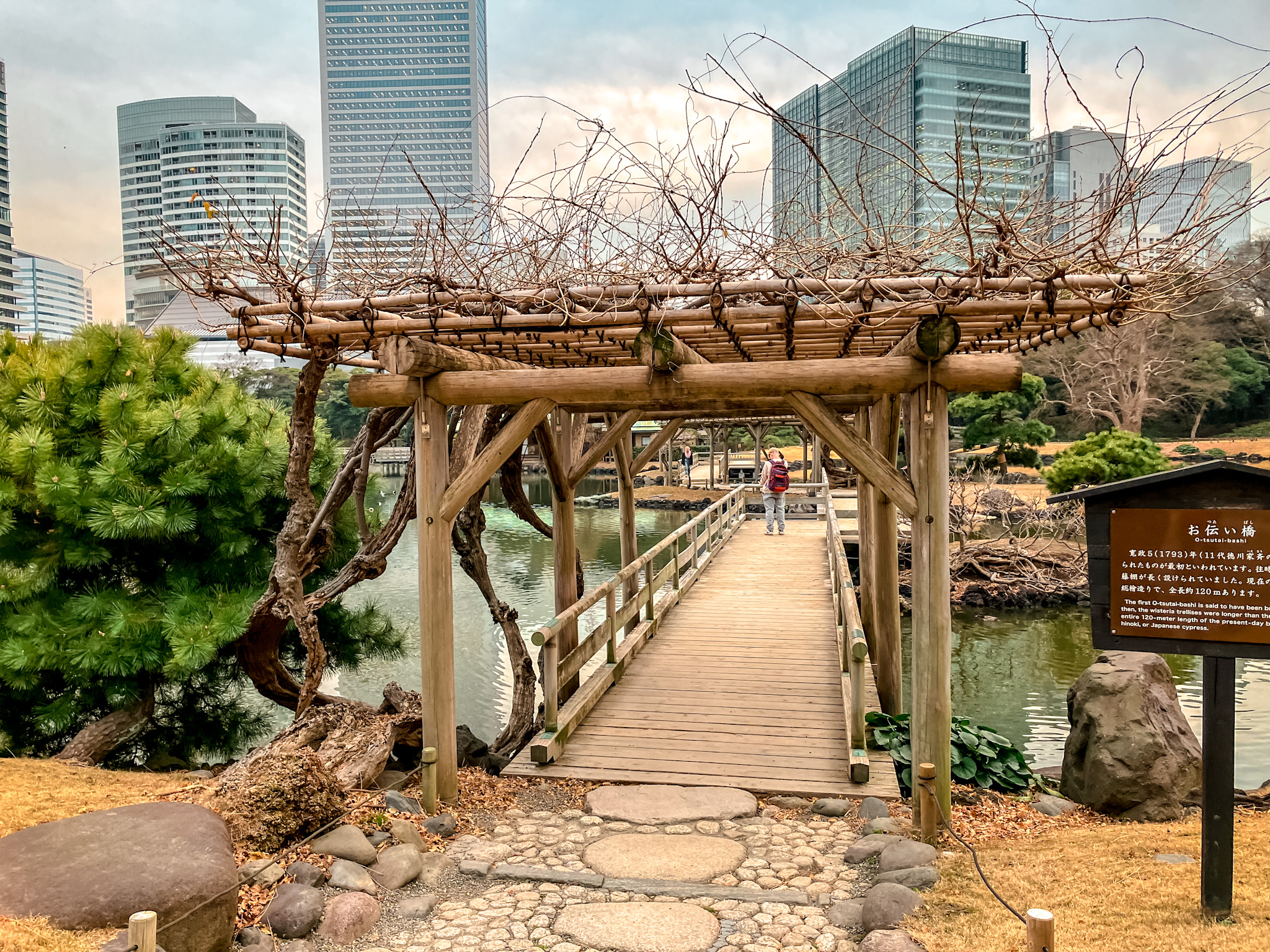
Essentials (hours, price, access)
Hours: 9:00–17:00 (last entry 16:30). Closed Dec 29–Jan 1.
Tickets: ¥300 adult (concession ¥150 for 65+; free for children up to elementary age / qualifying junior high). Cards accepted at the gate.
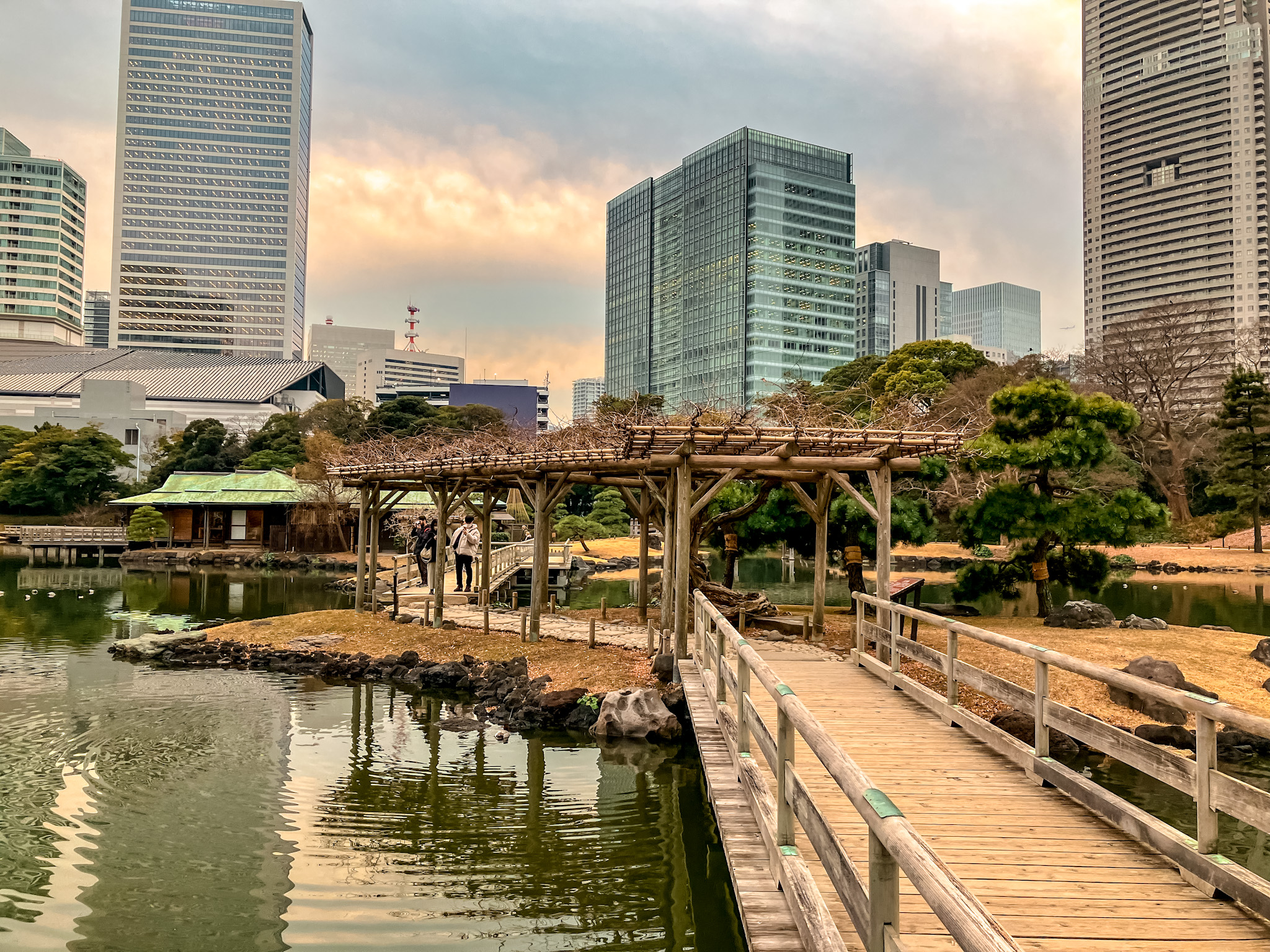
Nearest gates & stations:
Ōtemon Gate (good first stop; near the famous 300-year-old pine): Toei Ōedo Line Shiodome or Tsukijishijō ~7 min; JR/Metro Shimbashi ~10–12 min. tokyo-grand-
Nakanogomon Gate (closer to the flower fields/river).
Water bus pier (inside the garden): Boats run to Asakusa and Hinode Pier with Tokyo Cruise; you must enter the garden (¥300) to use the pier. Check the day’s timetable.
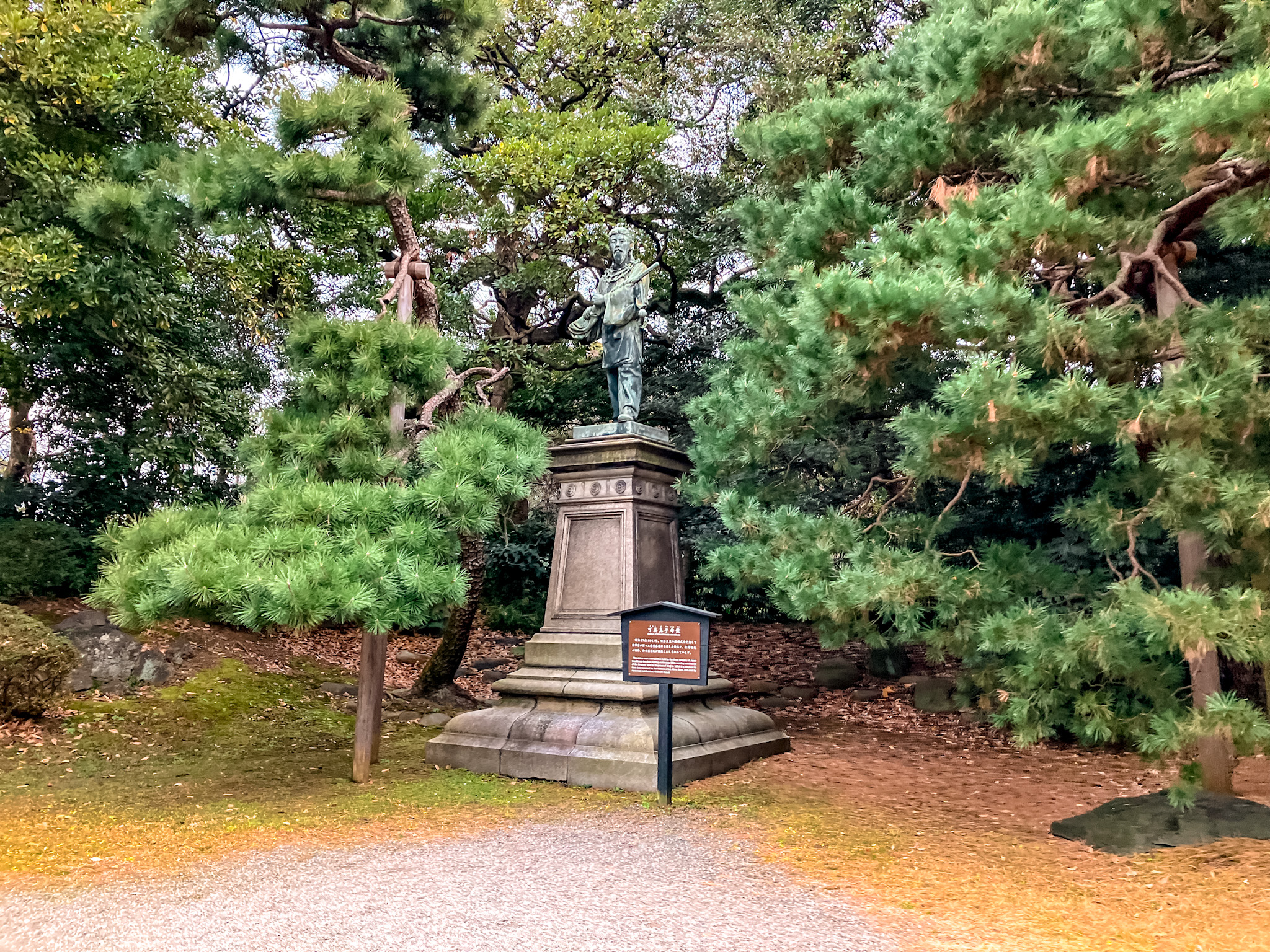
My take: If you’re pairing the garden with Tsukiji Outer Market, use Tsukijishijō (Ōedo Line) and walk in via Ōtemon Gate. If you’re coming from Asakusa, arrive by boat for a scenic entrance and stroll out toward Shiodome/Shimbashi.
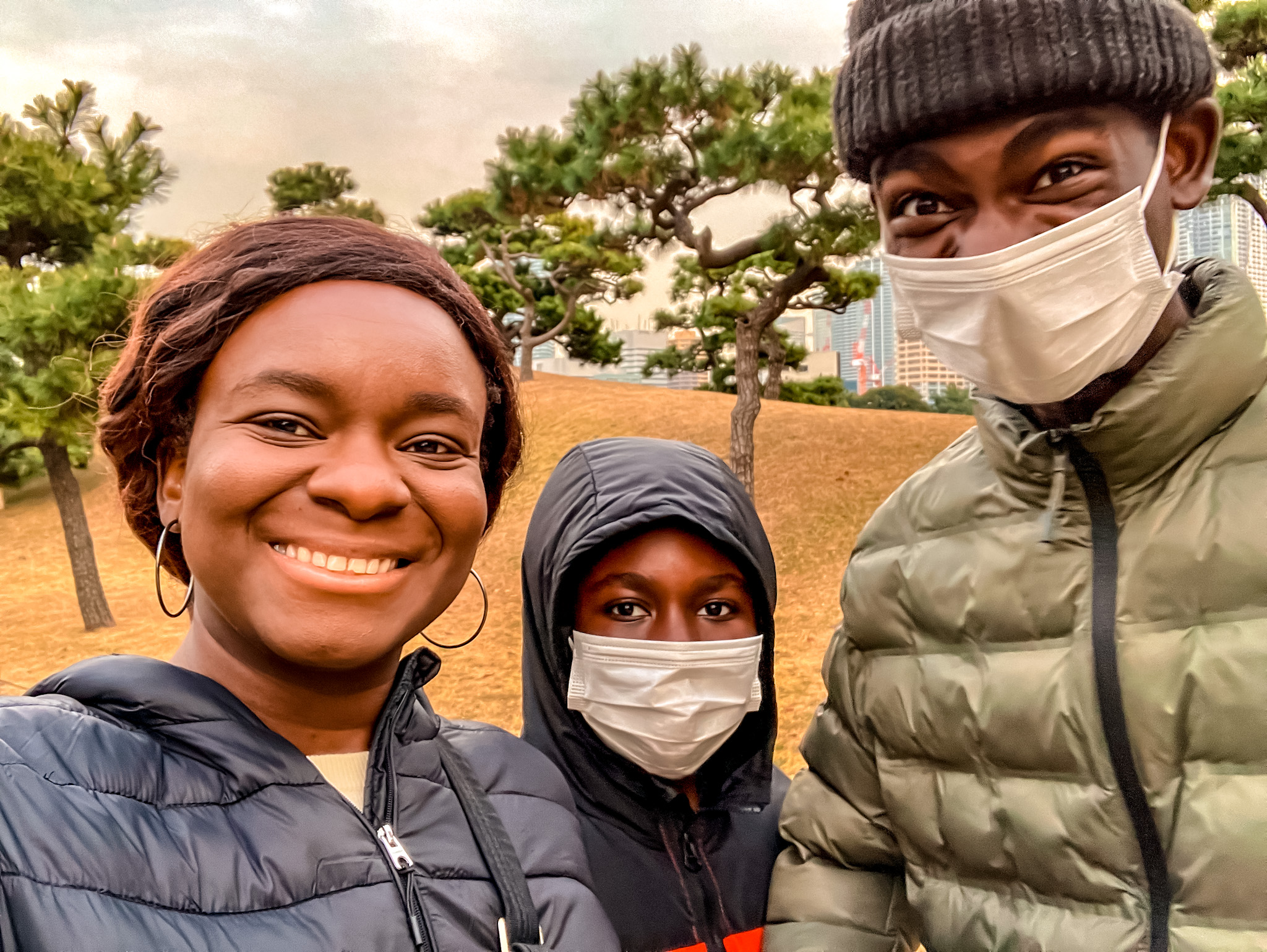
What to see (and how to see it without rushing)
1) The tidal pond & island tea house
Cross the small bridges to Nakajima-no-Ochaya, a tea house set right on the water. Order matcha with a wagashi sweet(typically around ¥700–¥1,000), slip off your shoes, and watch the light change over the pond. On a breezy day, you’ll actually notice the tide shifting the water level.
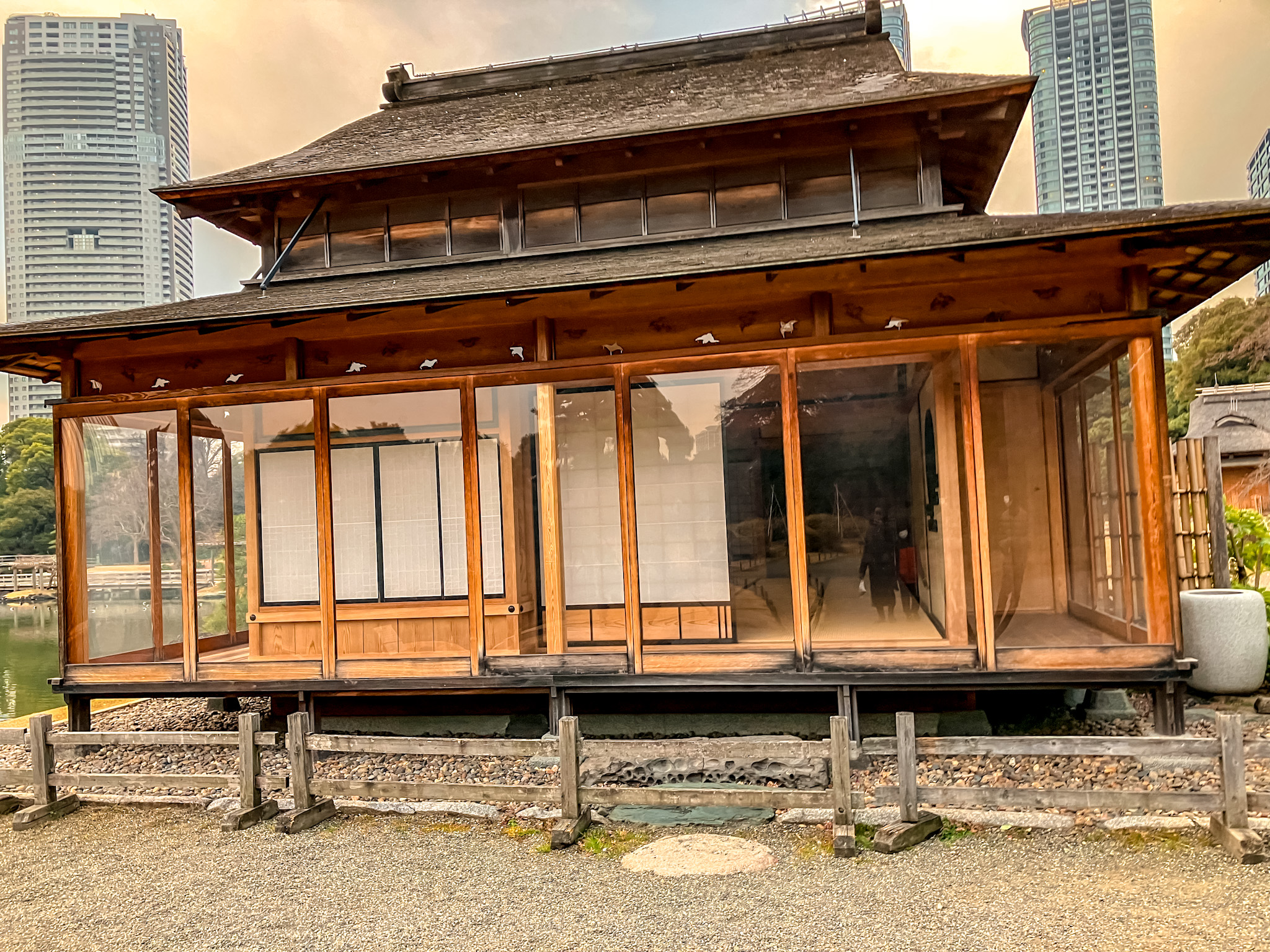
2) The 300-year-old pine (Sambyakunen-no-matsu)
A sprawling, meticulously trained black pine near Ōtemon Gate, it’s as much sculpture as tree and an instant “you’re in an Edo garden” moment.
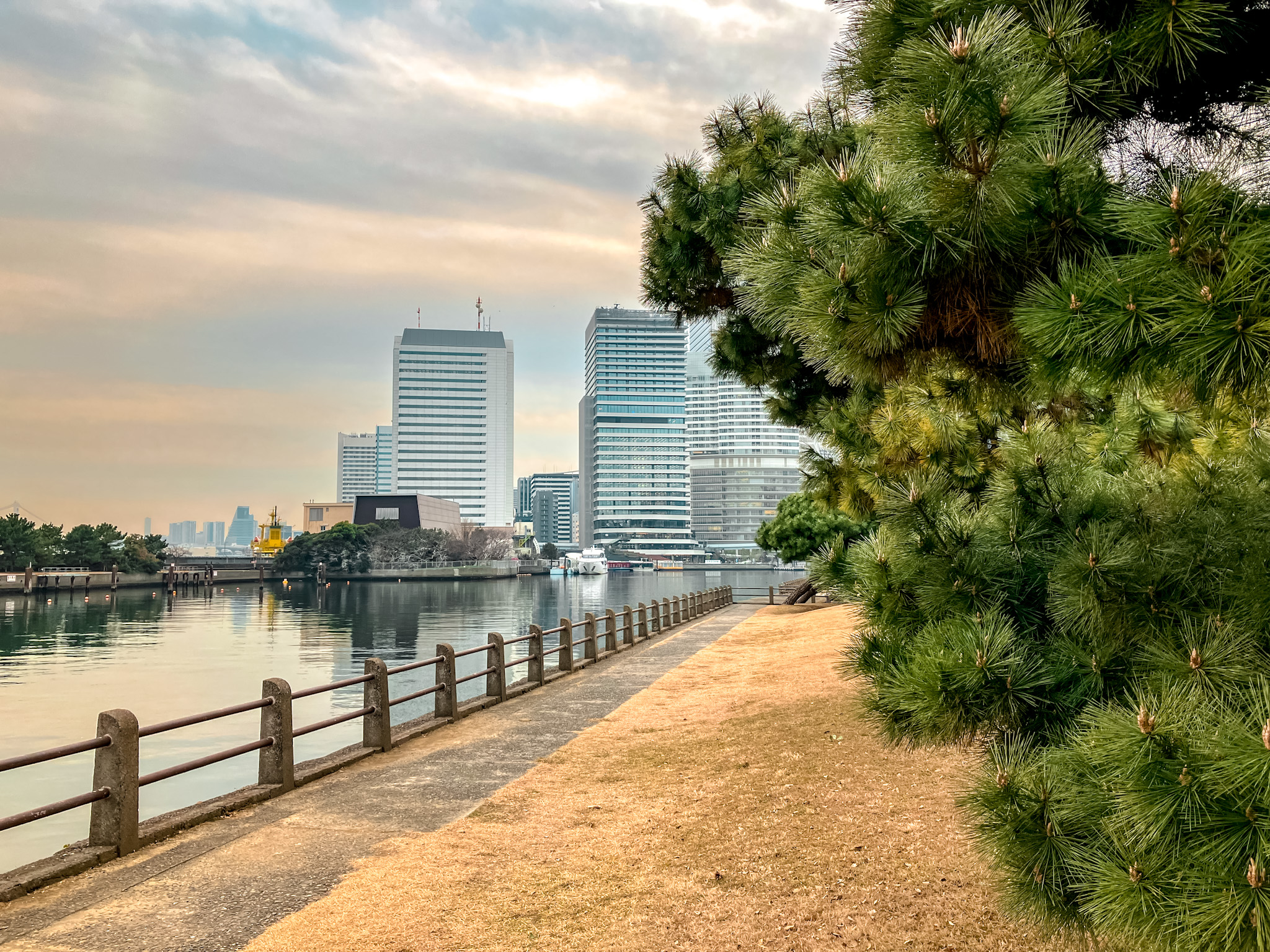
3) Flower fields & peony garden
Hama-rikyu’s color calendar is underrated: rape blossoms (canola) blanket the field from late Feb–Mar, peonies burst in spring, cosmos pop in autumn. Even in winter, watch for plum blossoms by late January.
4) Duck hunting blinds (kamoba)
Low, camouflaged structures used for traditional duck hunts in the Edo era, tiny windows into the garden’s feudal past.
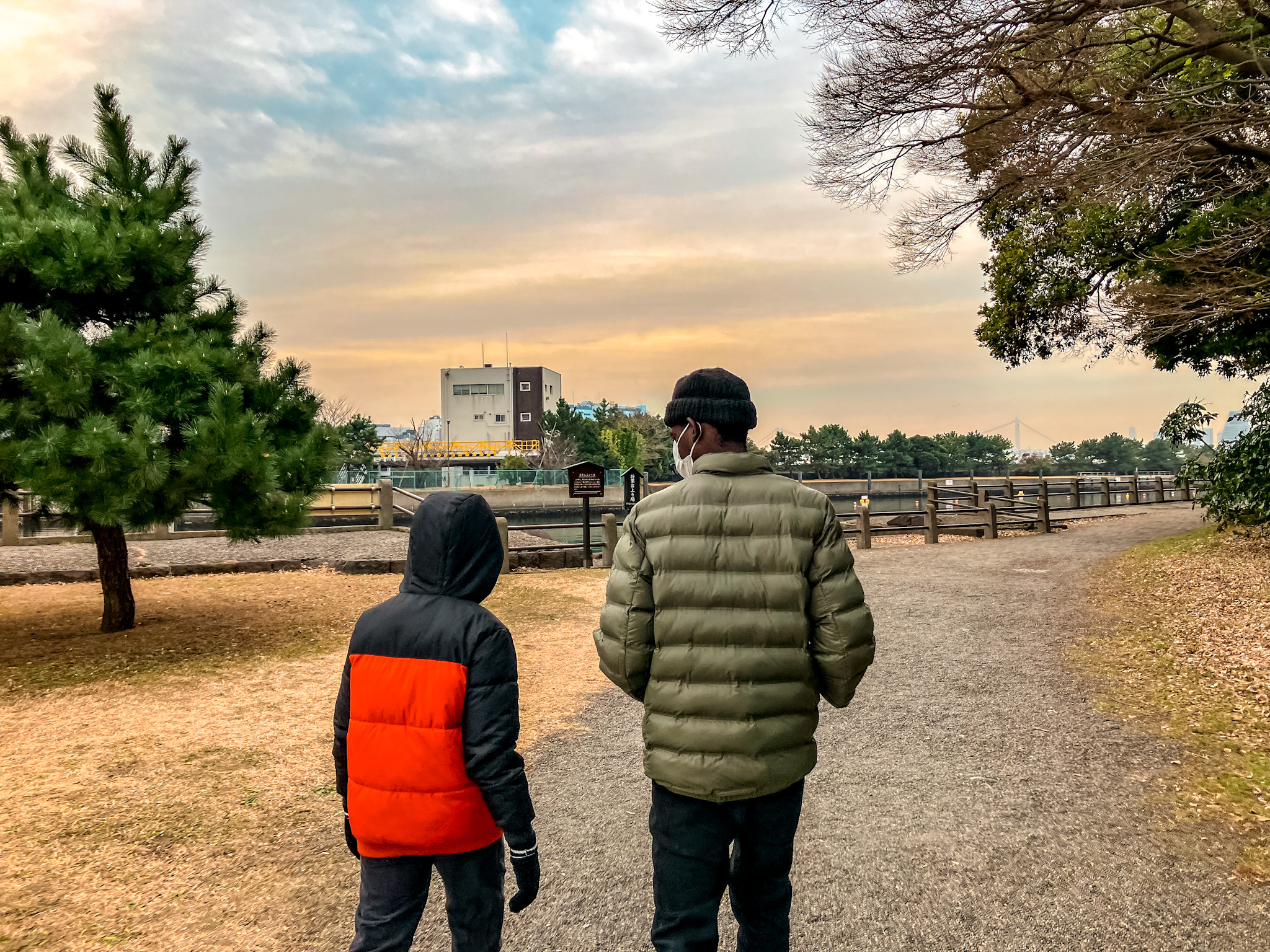
Best time to visit (by season)
Winter (Jan–Feb): Clear skies, fewer crowds, and great reflections on the pond. Early plums can start as early as late Jan; rape blossoms usually peak late Feb–Mar. Bring a warm layer, the bay breeze is real.
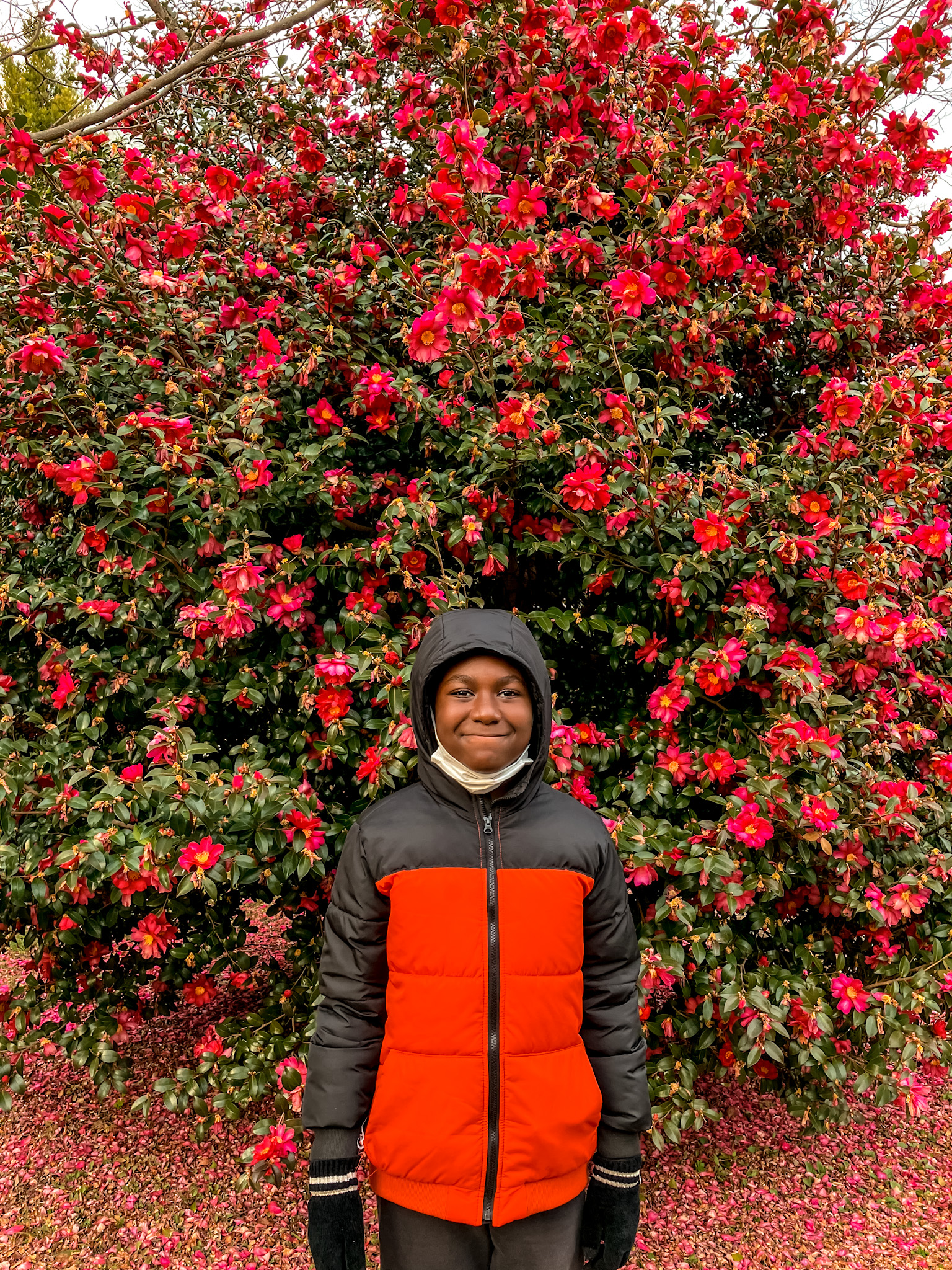
Spring (Mar–Apr): Cherry blossoms (about 80+ trees) plus peonies and fresh greens; weekends get busy.
Summer (Jun–Aug): Deep green, slower pace, come early or late for shade and breeze off the water.
Autumn (Oct–Dec): Maple & ginkgo color, warm light, and cosmos in the fields, prime photography season.
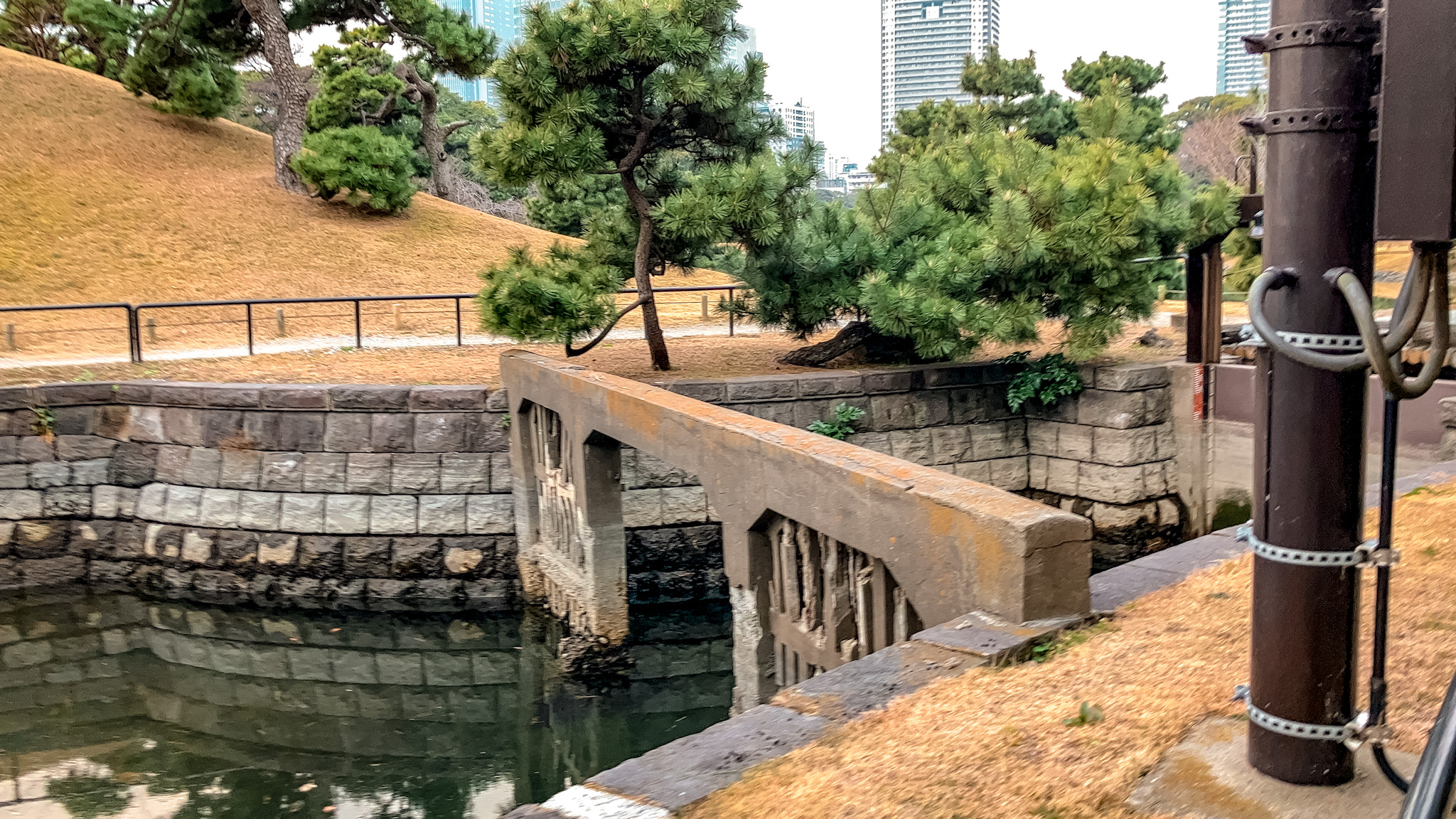
A simple, pretty route (40–90 minutes)
Enter at Ōtemon Gate → pause for the 300-year-old pine.
Walk the tidal pond edge and the boardwalks; detour to a kamoba (duck blind).
Cross to Nakajima-no-Ochaya for matcha and a sit.
Loop the flower field/peony garden (seasonal color) and up to the water-bus pier.
Exit toward Shiodome (cafés) or ride the boat to Asakusa if the timing works.
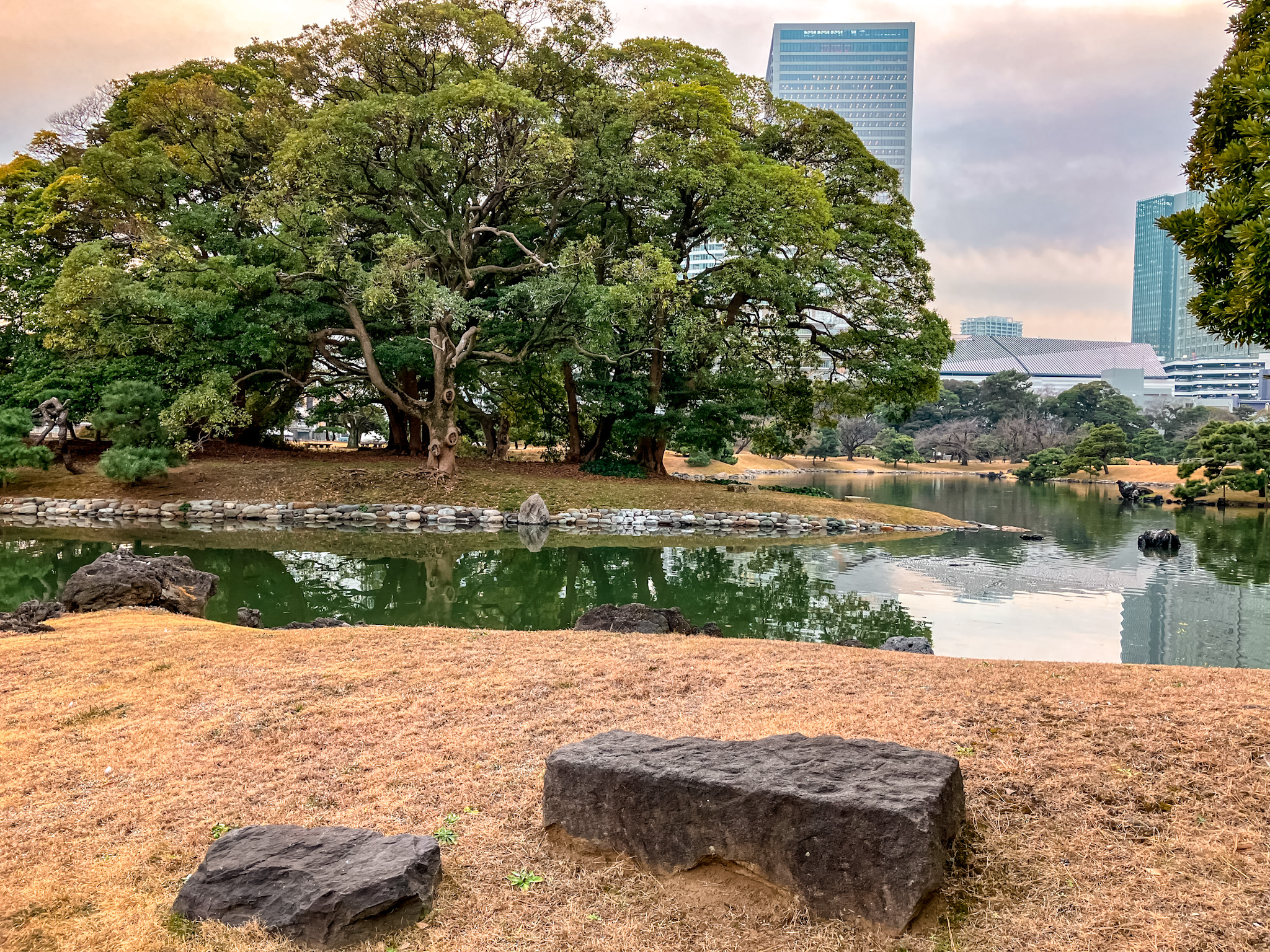
Photography & comfort tips (learned the nice way)
Light: Winter afternoons give long shadows and glassy reflections; spring mornings are softer for blossoms.
Wind: It’s bay-adjacent, hat/ear warmer recommended Nov–Mar.
Tea break: The tea house is your warm-up plan in winter; seats inside and out.
Facilities: Benches, restrooms, some Wi-Fi, and paved paths (strollers okay; a few gentle slopes). Tap-to-pay works at the gate.
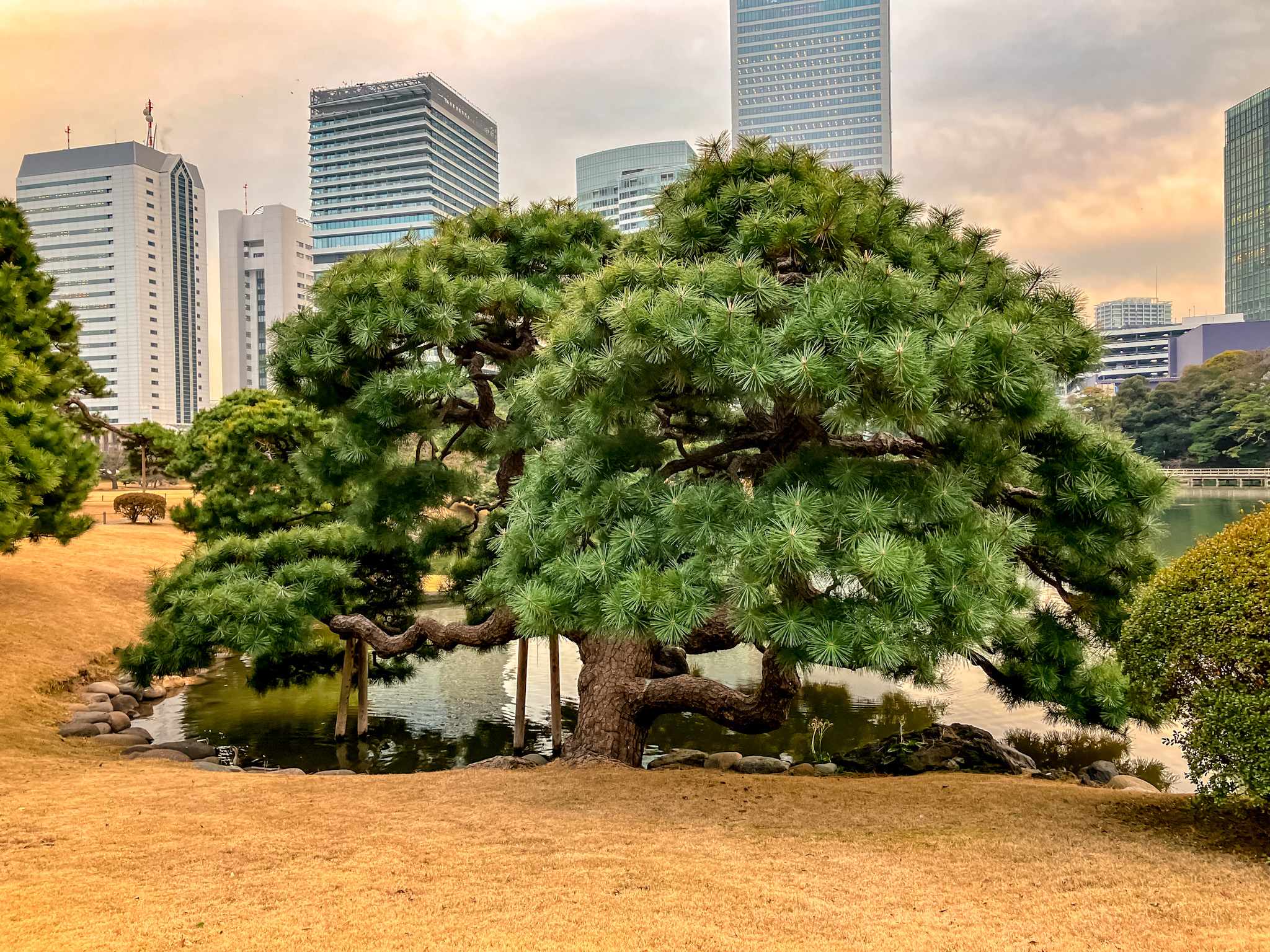
Free guided tours (worth it if the timing lines up)
Volunteer-led English tours generally run Saturdays, Sundays & 2nd/4th Mondays at 11:00 (weather permitting). The Japanese tours run weekends/holidays 11:00 & 14:00. Check the garden’s page or onsite signage the day you visit.
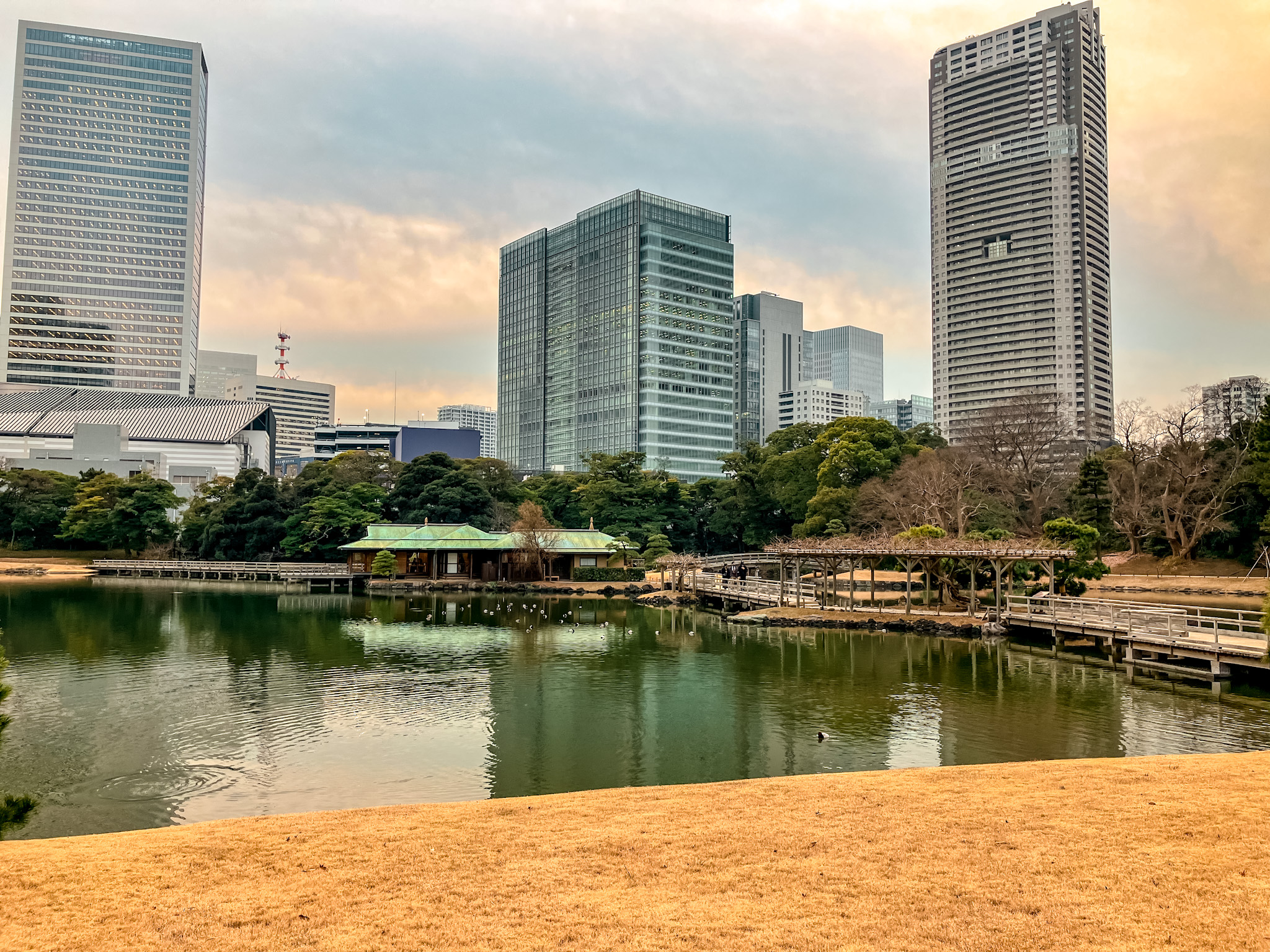
Pair it with…
Tsukiji Outer Market: 10–15 minutes’ walk for lunch (seafood bowls, tamagoyaki, snacks).
Shiodome/Shimbashi: Easy cafés and train links; in winter, Caretta often hosts illuminations after dark.
Sumida River cruise: Ride Tokyo Cruise from the Hama-rikyu pier to Asakusa (or down to Hinode Pier for Odaiba connections). Buy tickets at the pier kiosk; timetables vary by day.Pier for Odaiba connections). Buy tickets at the pier kiosk; timetables vary by day.
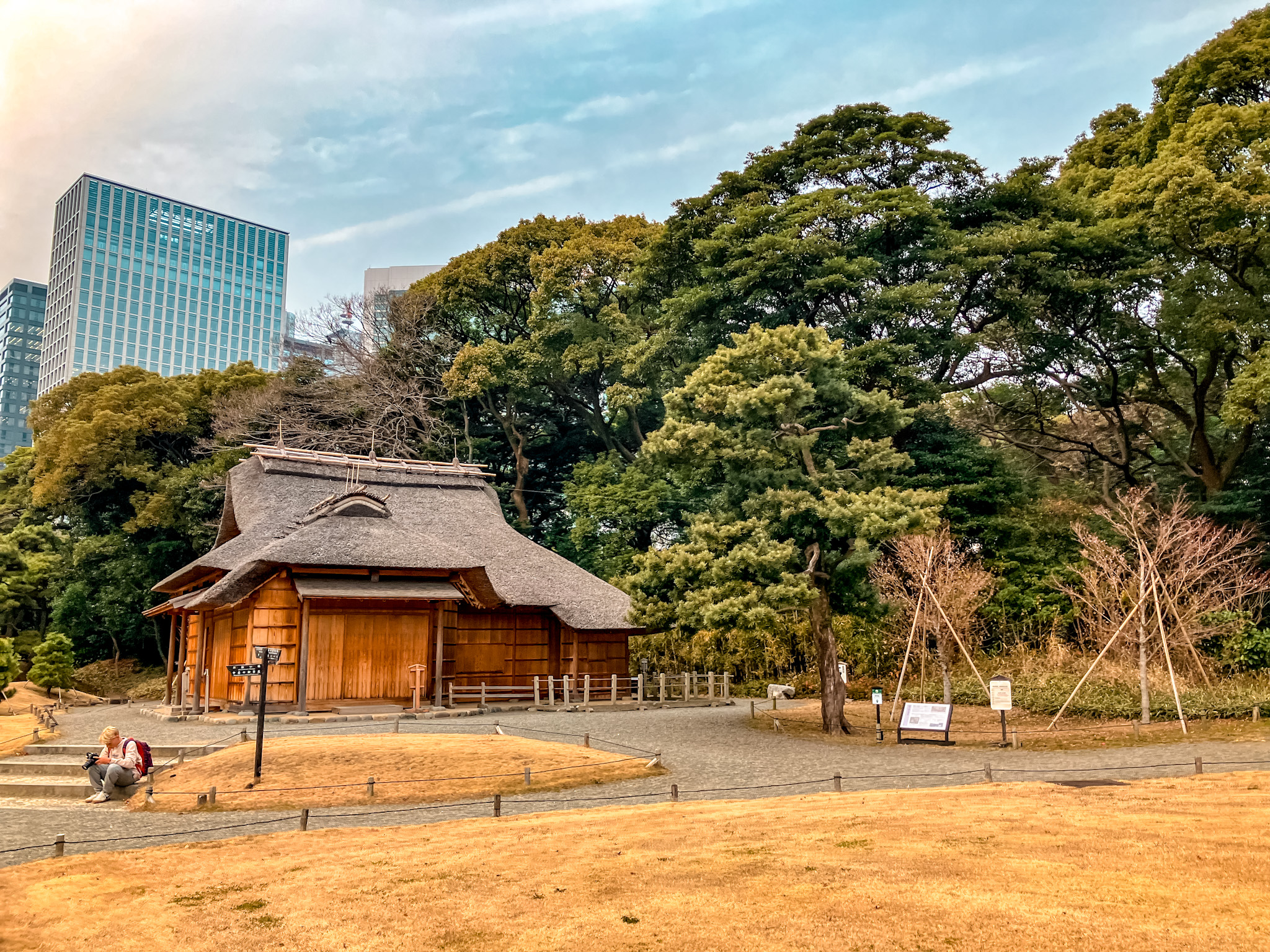
Quick FAQ
How long do I need?
A relaxed 60–90 minutes with a tea stop; add time if you’re boating to Asakusa.
Is it good in winter?
Yes, January is peaceful and clear; watch for early plums and mirror-like pond photos. Rape blossoms typically start late Feb.
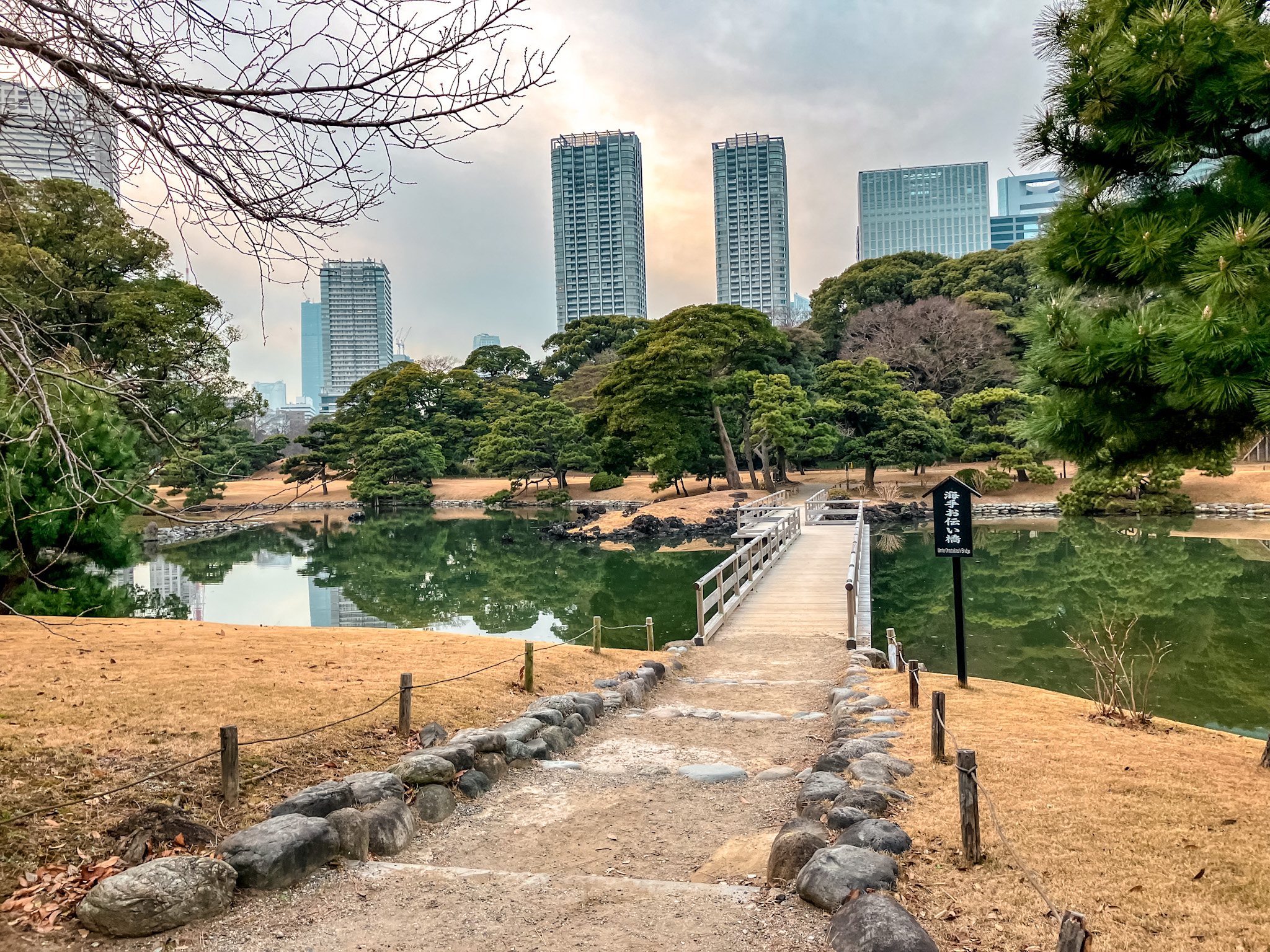
Can I pay by card?
Yes, gatehouses accept major cards/IC; carry small cash for the tea house just in case.
Which gate should I use?
Ōtemon for the 300-year-old pine and an easy loop; Nakanogomon for quick access to the flower fields and pier.
What’s the exact address?
1-1 Hama-rikyu-teien, Chūō-ku, Tokyo 104-0046.
